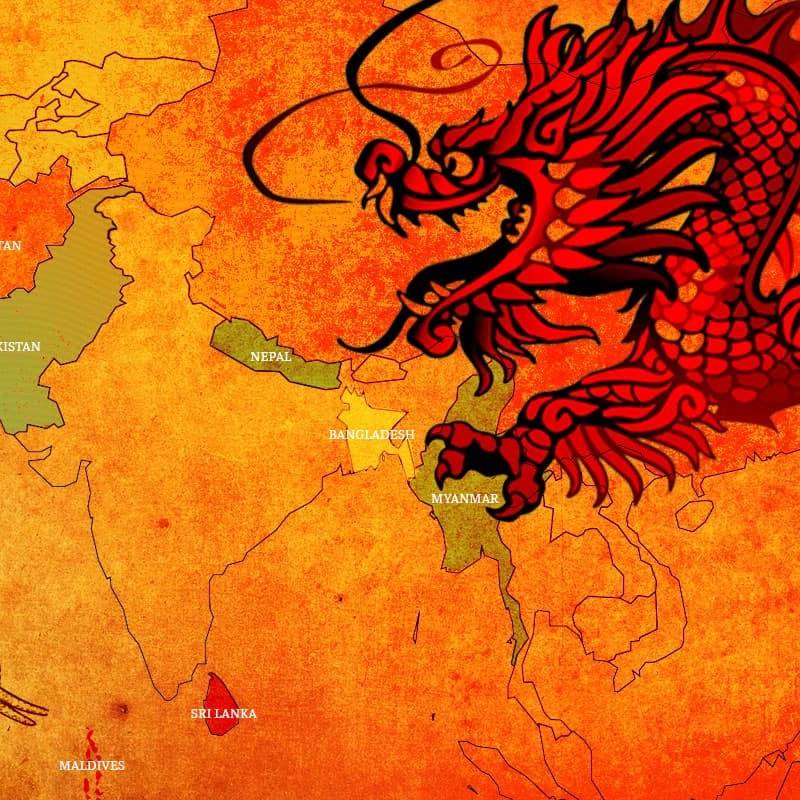Forecast to grow faster than China in the coming years, India is rapidly rising up the agenda of global CEOs. However, those approaching this important market must pay close attention to the boom currently underway in Indian e-retail and its profound implications for strategy development. Our in-depth analysis has discovered that those searching for insights into the future of Indian retail should look East rather than West, due to its striking similarities with China in both supply and demand dynamics.
With India’s economic growth forecast to overtake China’s in 2016, the country is poised to become the world’s fastest-growing large economy. As a result, global CEOs are re-calibrating their strategies to take advantage of potential opportunities in the emerging South Asian giant. However, when developing strategies for India, it is imperative that decision-makers understand the country’s fast-changing consumer behaviour and its evolving market structures, both of which will have major implications for their success.
Today, the most important shift occurring in India - across consumer demographics and product categories - is the rapid move to online. Since 2009, online sales in India have been growing at an annual rate of 65% as the Internet has become an increasingly popular shopping channel. With an estimated value of 3.9 billion USD in 2014, the Indian e-retail market has been driven by major players like Flipkart, Amazon and Snapdeal, who are leveraging their innovative models to scale-up at an incredible pace, already reaching the kind of size that the country’s incumbent retailers toiled for many years to achieve.
The e-retail revolution that is underway is radically transforming how Indian consumers interact with brands, evaluate their offerings and purchase their products. What is more, this process is manifesting itself in very distinct ways to what has been experienced in any developed country, adding another layer of difference to this already complex market.
In this context, CEOs looking at India are asking a number of questions about the evolution of e-retail, upon which there has been much debate but so far few clear answers. The three key questions being asked are:
What stage of development has e-retail reached in India?
How fast will e-retail penetration increase from here on?
What will the resulting retail landscape look like?
To find answers to these pressing questions, we conducted an in-depth study of how e-retail has developed across the globe to draw insights about the future prospects for Indian e-retail. We examined the experiences of key developed markets like the UK and the USA, as well as China. As our findings increasingly indicated that China had the most compelling similarities with the Indian scenario, our focus gravitated to that market and the insights it offered.
What stage of development has e-retail reached in India?
The first major insight from our analysis was that India has reached an inflexion point, marking the start of a much faster phase of growth in online retail. Like most disruptive business models, wherever e-retail has emerged around the world it has developed in three successive phases:
Incubation: a period of slow growth during which players develop new capabilities, investors get comfortable in funding unusual businesses, and buyers adapt to new forms of consumption.
Inflexion: the tipping point when growth suddenly takes-off as players reach the necessary level of development to effectively match the market’s needs.
Acceleration: a longer phase during which the pace of growth increases, turning e-retail into a mainstream market space.
By analysing the evolution of e-retail in the countries of study, we were able to clearly identify these phases and measure their duration. In the USA and the UK e-retail appeared around 1995, when players like eBay and Amazon came on the scene with what were then highly innovative business models. Subsequently, online retail witnessed rather slow development in the first five years until it reached an inflexion point between 1999 and 2000, at the height of the dot-com boom. Since then, despite the bursting of the bubble, online sales kept growing at healthy rates. Today, e-retail has reached a penetration rate of 6% of total retail in the USA, and a much higher rate of 14% in the UK.
A similar growth story happened in China, albeit at a more rapid pace. There, the starting gun was fired with the launch of Alibaba’s consumer-oriented platform Taobao in 2003, but online retail in China was similarly slow out of the blocks in the initial years. Then in 2007, after 4 years of incubation, the Chinese market reached its inflexion point as it started to attract an increasing number of urban shoppers which led to an unprecedented rate of growth. Since 2007, online channels have gained so much traction with suppliers and consumers in China that e-retail penetration has reached 9% in a very short time frame, surpassing the USA back in 2011, and now closing fast on the UK.





